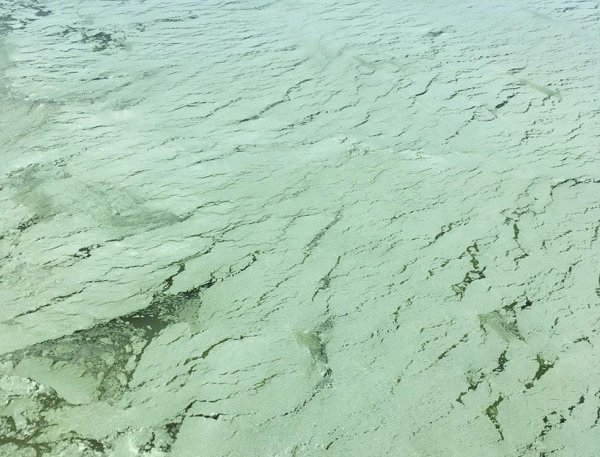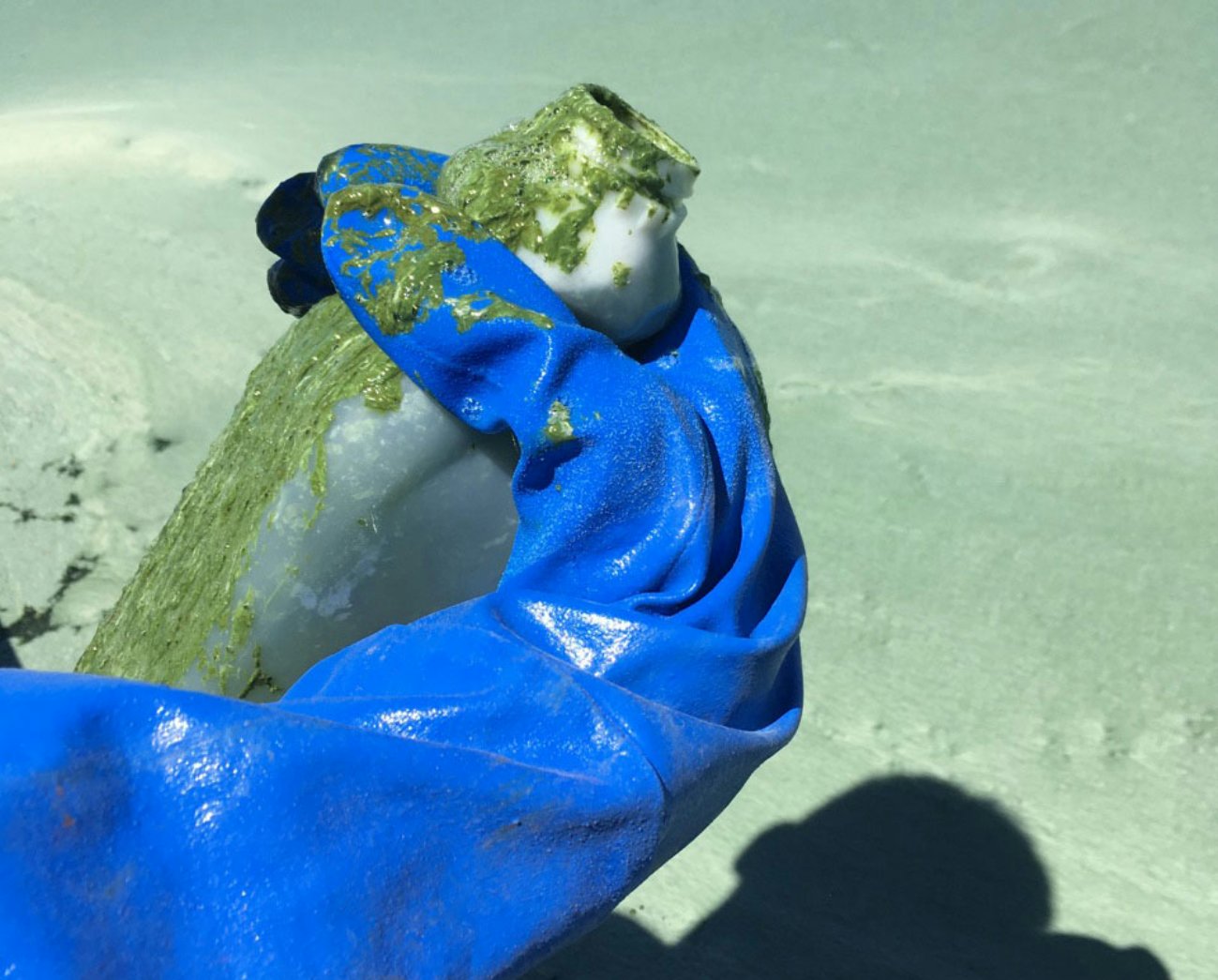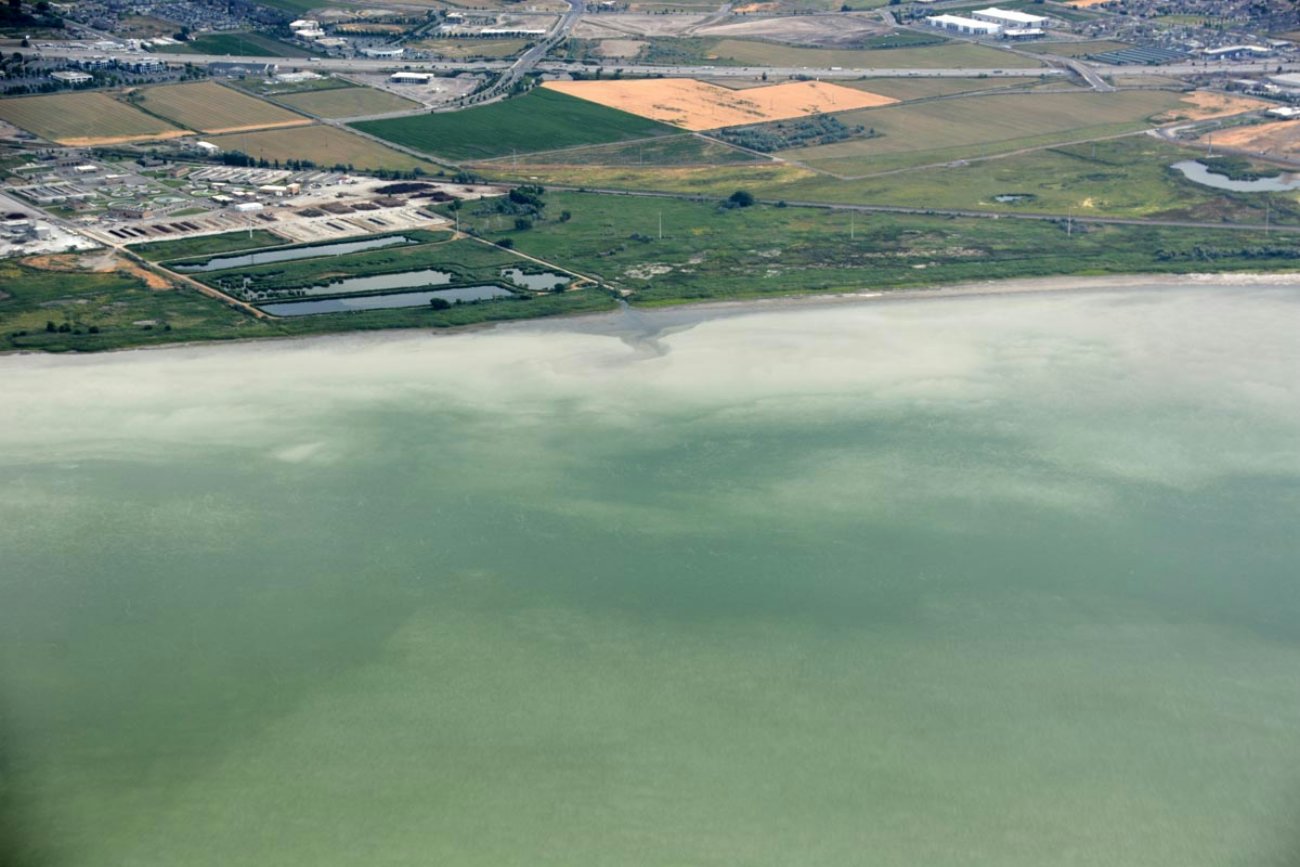
ST. GEORGE – Is the toxic blue-green algae currently infesting Utah Lake something the residents of Washington County need to worry about? According to water officials: not so much. The toxic substance that has shut down the lake and sickened over 100 people is created by a combination of factors that are currently lacking at Sand Hollow and other reservoirs.

“I know we don’t have it at Sand Hollow, Quail Creek and Gunlock,” said Laura Melling, Sand Hollow Complex manager.
Officials at Sand Hollow are more concerned with keeping out invasive quagga mussels and dealing with outbreaks of parasitic swimmer’s itch, Melling said.
The bacteria, commonly known as blue-green algae, has spread rapidly to cover almost all 150-square-miles of Utah Lake, turning the water bright, anti-freeze green with a pea soup texture and leaving scummy foam along the shore.
Though algae is a natural occurrence in bodies of water, certain conditions must be present to create the poisonous bacteria, said Nathan Schwebach, a spokesman for the Utah Department of Natural Resources.
Some of the conditions that contribute to the creation of the blue-green algae, also called cyanbacteria, include stagnant and low waters, high temperatures, and nutrients in runoff like phosphorous and nitrogen that feed the algae.
The lake is largely fed by treated wastewater as well as agricultural runoff, said Erica Gaddis, assistant director for the Utah Division of Water Quality, according to The Associated Press.
Longstanding drought conditions have made the water especially low and stagnant. Combine that with hot summer weather and Utah Lake became a perfect petri dish for the cyanobacteria.
There are chemical and biological treatments for the problem, but using them on such a large bloom would be unprecedented and possibly harmful, Gaddis said.
For now, authorities are waiting for the bloom to run its course and clear, hopefully aided by a drop in temperatures or a storm that could stir up the water and reduce stagnation.
The closures of the lake and associated waterways left farmers who water their crops from the lake worried. They were able to get some relief Friday after the state lifted the irrigation ban.

Recent testing of the toxin levels showed they had dropped to acceptable levels. The lake itself remains closed.
Utah Poison Control said it has fielded hundreds of calls related to the bloom, including some 130 involving people who have reported vomiting, diarrhea, headache and rashes.
Back in Southern Utah, Kerry Rathje, public information manager for the Washington County Water Conservancy District, said there’s little concern about the cyanobacteria reaching the county’s waters.
Unlike the Jordan River and other waterways, none of the Washington County water system is tied to Utah Lake in any way, so there’s no risk of infestation in that respect.
As well, traces of the toxic bacteria picked up by watercraft at Utah Lake that may come to Sand Hollow or other county waters do not pose a risk of spreading.
Still, if the conditions are right, the poisonous blooms can develop anywhere, said Donna Spangler of the Utah Department of Environmental Quality.

“The most susceptible waters to algal blooms are those that have higher water temperatures, are quiescent and are most nutrient enriched,” according to a Utah DEQ FAQ sheet. “In the recent past we have had algal blooms on backwaters of the Jordan River backwaters, Farmington Bay, Lindon Harbor, Blackridge Pond, Payson Lake, Salem Pond, Schofield Reservoir and Pineview Reservoir.”
To keep ahead of any potential problems, the water district conducts up to 4,000 water quality tests a year, Rathje said.
The water system in Washington County is one of the most interconnected in all of Utah and is packed with redundancies, Rathje said. So if one part of the system gets tainted somehow, it can be shut off from the rest of the system in order to maintain the integrity of the water supply.
Toxic algae is a problem around the country. An enormous outbreak in Florida is now fouling beaches on the Atlantic coast, and a 2014 outbreak at Lake Erie left more than 400,000 people in the Toledo area without tap water for two days.
The Associated Press contributed to this story.
Email: [email protected]
Twitter: @MoriKessler
Copyright St. George News, SaintGeorgeUtah.com LLC, 2016, all rights reserved.
If they would keep ladybug out of the water. There wouldn’t be a sludge problem.♡♡♡
Fortunately, there are no industries dumping their waste water into Sand Hollow nor is there agriculture close by dumping their fertilizer and other products in. Until our state gets control over these waste products that contribute to these outbreaks those who enjoy lakes in other areas of our state will pay with their recreation opportunities. During the hot summer days these lakes are so important to people getting out and cooling off in some water to have a little fun. Those who contribute to this problem would do well to review their practices that are taking enjoyment away from others.
There are no industries that are “dumping” their waste into Utah Lake either. The water that goes into Utah Lake are regulated point discharges that have controlled limits. Most if not all of those discharges are from municipal wastewater treatment plants that treat the water before it enters Utah Lake, and there are nitrogen and phosphorus limits to that discharge. There is a plan in place already to reduce those limits even further throughout the state. The main problem with Utah Lake is it’s large surface area, shallow depth (which both contribute heavily to it having a high temperature) and it’s stagnant nature. These, all combined together with the natural surface runoff of thousands of acres of agricultural land and municipal land loaded with additional nutrients make this a prime area for what is occurring. Fortunately, the reservoirs here in southern Utah do not have those same conditions.